Irvine, California, Hgh State Clinic, Hgh Injections, Hrt Doctors
Irvine, California Blood Testing Facilities
 Represents a LabCorp blood testing facility
Represents a LabCorp blood testing facility Represents a Quest Diagnostics blood testing facility
Represents a Quest Diagnostics blood testing facility

Nearby Labcorp Blood Testing facilities:
- Labcorp Center Distance: 0 m, 113 Waterworks Way Suite 160, Irvine, Orange County, CA, 92618
- Labcorp Center Distance: 1 m, 4980 Barranca Pkwy Suite 100, Irvine, Orange County, CA, 92604
- Labcorp Center Distance: 2 m, 4870 Barranca Pkwy. Ste 290, Irvine, Orange County, CA, 92604
- Labcorp Center Distance: 5 m, 23961 Calle De La Magdalena St, Laguna Hills, Orange County, CA, 92653
- Labcorp Center Distance: 6 m, 100 N. Tustin Avenue, Tustin, Orange County, CA, 92780
- Labcorp Center Distance: 7 m, 400 Newport Center Dr Ste 202, Newport Beach, Orange County, CA, 92660
- Labcorp Center Distance: 8 m, 29873 Santa Margarita Pkwy102, Rancho Santa Margarita, Orange County, CA, 92688
- Labcorp Center Distance: 9 m, 705 W La Veta Ave Ste 102, Orange, Orange County, CA, 92868
- Labcorp Center Distance: 10 m, 1501 Superior Ave. Ste 209, Newport Beach, Orange County, CA, 92663
- Labcorp Center Distance: 11 m, 12665 Garden Grove Bl. Ste 212, Garden Grove, Orange County, CA, 92843
- Labcorp Center Distance: 12 m, 15064 Moran Street, Westminster, Orange County, CA, 92683
- Labcorp Center Distance: 13 m, 18821 Delaware St. Ste 102, Huntington Beach, Orange County, CA, 92648
- Labcorp Center Distance: 15 m, 1201 N. Rose Dr. Suite 202, Placentia, Orange County, CA, 92870
- Labcorp Center Distance: 16 m, 665 Camino De Los Mares 303A, San Clemente, Orange County, CA, 92673
- Labcorp Center Distance: 17 m, 900 S. Main St. Suite 207, Corona, Riverside County, CA, 92882
- Labcorp Center Distance: 18 m, 10601 Walker St. Suite 250, Cypress, Orange County, CA, 90630
- Labcorp Center Distance: 19 m, 1661 Golden Rain Rd, Seal Beach, Orange County, CA, 90740
- Labcorp Center Distance: 20 m, 1190 Pacific Coast Hwy Ste C, Seal Beach, Orange County, CA, 90740
- Labcorp Center Distance: 23 m, 1703 Termino Ave Ste 102, Long Beach, Los Angeles County, CA, 90804
- Labcorp Center Distance: 24 m, 12555 Central Ave. Ste Af, Chino, San Bernardino County, CA, 91710
- Labcorp Center Distance: 25 m, 3975 Jackson St. Ste 104, Riverside, Riverside County, CA, 92503
- Labcorp Center Distance: 26 m, 31571 Canyon Estates Dr Ste101, Lake Elsinore, Riverside County, CA, 92532
- Labcorp Center Distance: 27 m, 1900 Royalty Drive Suite 230, Pomona, Los Angeles County, CA, 91767
- Labcorp Center Distance: 28 m, 6927 Brockton Ave Ste 1B, Riverside, Riverside County, CA, 92506
- Labcorp Center Distance: 29 m, 1335 Cypress Ave. Suite 101, San Dimas, Los Angeles County, CA, 91773
- Labcorp Center Distance: 30 m, 1310 San Bernardino Rd Ste 107, Upland, San Bernardino County, CA, 91786
- Labcorp Center Distance: 31 m, 10801 Foothill Blvd Ste 105, Rancho Cucamonga, San Bernardino County, CA, 91730
- Labcorp Center Distance: 32 m, 126 Avocado Ave. Ste 105, Perris, Riverside County, CA, 92571
- Labcorp Center Distance: 33 m, 29798 Haun Rd Ste 102, Menifee, Riverside County, CA, 92586
- Labcorp Center Distance: 34 m, 25405 Hancock Ave. Suite 107, Murrieta, Riverside County, CA, 92562
- Labcorp Center Distance: 35 m, 3500 Lomita Blvd. Suite 102, Torrance, Los Angeles County, CA, 90505
- Labcorp Center Distance: 36 m, 587 E. Elder Street, Fallbrook, San Diego County, CA, 92028
- Labcorp Center Distance: 37 m, 510 N. Prospect Ave. Suite 305, Redondo Beach, Los Angeles County, CA, 90277
- Labcorp Center Distance: 38 m, 50 Alessandro Pl. Suite A10, Pasadena, Los Angeles County, CA, 91105
- Labcorp Center Distance: 39 m, 31150 Temecula Parkway Ste 201, Temecula, Riverside County, CA, 92592
- Labcorp Center Distance: 40 m, 255 Terracina Blvd Ste 106, Redlands, San Bernardino County, CA, 92373
- Labcorp Center Distance: 41 m, 8540 S Sepulveda Blvd Ste 107, Westchester, Los Angeles County, CA, 90045
- Labcorp Center Distance: 42 m, 399 E. Highland Ave. Ste 510, San Bernardino, San Bernardino County, CA, 92404
- Labcorp Center Distance: 43 m, 2067 West Vista Way Suite 275, Vista, San Diego County, CA, 92083
- Labcorp Center Distance: 44 m, 8920 Wilshire Blvd. Suite 516, Beverly Hills, Los Angeles County, CA, 90211
- Labcorp Center Distance: 45 m, 8737 Beverly Blvd Ste 401, Los Angeles, Los Angeles County, CA, 90048
- Labcorp Center Distance: 46 m, 850 E. Latham Ave. Ste Cd, Hemet, Riverside County, CA, 92544
- Labcorp Center Distance: 47 m, 34845 Yucaipa Bl. Ste B, Yucaipa, San Bernardino County, CA, 92399
- Labcorp Center Distance: 48 m, 1595 Grand Ave Ste 109, San Marcos, San Diego County, CA, 92078
- Labcorp Center Distance: 49 m, 10420 Beaumont Ave. Suite G, Cherry Valley, Riverside County, CA, 92223
- Labcorp Center Distance: 50 m, 345 Saxony Rd Ste 201B, Encinitas, San Diego County, CA, 92024
- Labcorp Center Distance: 51 m, 351 Santa Fe Dr Ste 210, Encinitas, San Diego County, CA, 92024
- Labcorp Center Distance: 52 m, 3936 Phelan Rd. Suite F4, Phelan, San Bernardino County, CA, 92371
- Labcorp Center Distance: 53 m, 1955 Citracado Pkwy Suite 103, Escondido, San Diego County, CA, 92029
- Labcorp Center Distance: 54 m, 629 East Grand Ave, Escondido, San Diego County, CA, 92025
- Labcorp Center Distance: 55 m, 18399 Ventura Blvd. Suite 17, Tarzana, Los Angeles County, CA, 91356
Nearby Quest Blood Testing facilities:
- Quest Center Distance: 2 m, 4950 Barranca Pkwy, Irvine, Orange County, CA, 92604-8648
- Quest Center Distance: 5 m, 23521 Paseo De Valencia, Laguna Hills, Orange County, CA, 92653-3673
- Quest Center Distance: 6 m, 801 N Tustin Ave, Santa Ana, Orange County, CA, 92705-3607
- Quest Center Distance: 9 m, 1310 W Stewart Dr, Orange, Orange County, CA, 92868-3838
- Quest Center Distance: 10 m, 11180 E Warner Ave, Fountain Valley, Orange County, CA, 92708-7515
- Quest Center Distance: 11 m, 9900 Talbert Ave, Fountain Valley, Orange County, CA, 92708-5153
- Quest Center Distance: 13 m, 18800 Main St, Huntington Beach, Orange County, CA, 92648-1718
- Quest Center Distance: 16 m, 2250 S. Main St, Corona, Riverside County, CA, 92882-2534
- Quest Center Distance: 17 m, 118 W 9Th St, Corona, Riverside County, CA, 92882-3320
- Quest Center Distance: 22 m, 4028 Grand Ave, Chino, San Bernardino County, CA, 91710-5486
- Quest Center Distance: 23 m, 15141 Whittier Blvd, Whittier, Los Angeles County, CA, 90603-2158
- Quest Center Distance: 25 m, 9041 Magnolia Ave, Riverside, Riverside County, CA, 92503-3956
- Quest Center Distance: 26 m, 32251 Mission Trl, Lake Elsinore, Riverside County, CA, 92530-4536
- Quest Center Distance: 29 m, 4646 Brockton Ave, Riverside, Riverside County, CA, 92506-0103
- Quest Center Distance: 30 m, 1399 E Foothill Blvd, Upland, San Bernardino County, CA, 91786-4060
- Quest Center Distance: 31 m, 1294 W 6Th St, San Pedro, Los Angeles County, CA, 90731-2998
- Quest Center Distance: 32 m, 6485 Day St, Riverside, Riverside County, CA, 92507-0926
- Quest Center Distance: 35 m, 23441 Madison St, Torrance, Los Angeles County, CA, 90505-4735
- Quest Center Distance: 36 m, 27699 Jefferson Ave, Temecula, Riverside County, CA, 92590-2696
- Quest Center Distance: 37 m, 520 N Prospect Ave, Redondo Beach, Los Angeles County, CA, 90277-3043
- Quest Center Distance: 38 m, 960 E. Green St., Pasadena, Los Angeles County, CA, 91106-2405
- Quest Center Distance: 42 m, 3601 Vista Way, Oceanside, San Diego County, CA, 92056-4559
- Quest Center Distance: 44 m, 8501 Wilshire Blvd, Beverly Hills, Los Angeles County, CA, 90211-3117
- Quest Center Distance: 51 m, 477 N El Camino Real, Encinitas, San Diego County, CA, 92024-1353
- Quest Center Distance: 58 m, 18250 Roscoe Blvd, Northridge, Los Angeles County, CA, 91325-4265
- Quest Center Distance: 61 m, 12370 Hesperia Rd, Victorville, San Bernardino County, CA, 92395-4787
- Quest Center Distance: 69 m, 1220 La Venta Dr., Westlake Village, Ventura County, CA, 91361-3749
- Quest Center Distance: 70 m, 2876 Sycamore Dr, Simi Valley, Ventura County, CA, 93065-1550
- Quest Center Distance: 76 m, 5103 Garfield St, La Mesa, San Diego County, CA, 91941-5103
- Quest Center Distance: 81 m, 480 4Th Ave, Chula Vista, San Diego County, CA, 91910-4411
- Quest Center Distance: 83 m, 500 Paseo Camarillo, Camarillo, Ventura County, CA, 93010-5900
- Quest Center Distance: 87 m, 81715 Dr Carreon Blvd, Indio, Riverside County, CA, 92201-5564
- Quest Center Distance: 94 m, 309 E Mountain View St, Barstow, San Bernardino County, CA, 92311-2814
California Hormone Replacement Therapy Services
Hormone Imbalance is a significant medical issue that many people don't consider as thoughtfully as they should. Do you feel that your body and mind are slowing down as you grow older, and do you want to do something about it?
The Conscious Evolution Institute can quickly and discreetly provide you with Physician-Monitored Hormone Replacement Therapy Solutions. We offer a number of plans and programs which have been proven to help improve the lives and wellness of millions across the United States and the World.
Testosterone Therapy in California
As we grow older, our hormone levels start to decline naturally as a result of age. Starting around the age of thirty, men can start to suffer from a decline in physical and sexual health resulting directly from Low-T. If you are experiencing a lack of sex drive or symptoms of Erectile Dysfunction, this could be the tip of the iceberg of a number of different medical problems which can have a significantly negative impact on your health and longevity.
Testosterone Deficiency can even impact female health! Especially in the areas of sexual and cardiovascular health.
HGH Replacement in California
Like Testosterone, Growth Hormone Levels also start to decline with age, to the great detriment of our health. HGH sustains the cellular metabolism of the body, feeding us energy and allowing our bodies to rebuild and rehabilitate. As HGH Levels drop, our body goes into physiological decline because it simply can't keep up with the demands of day-to-day life.
Bio-Identical Growth Hormone Injections can restore healthy adult HGH concentrations, giving the body the raw resources needed to amplify health and wellness and preserve the human body from the effects of premature aging.
Sermorelin Injections in California
Sermorelin is an alternative to Human Growth Hormone, which fulfills the same goal of mitigating the effects of Growth Hormone Deficiency. Rather than replace HGH directly, Sermorelin Acetate stimulates the body to produce more of this precious hormone, while the body still has the ability to regulate HGH Release to make sure that the body gets the optimal level of Growth Hormone.
California HCG Diet
For men and women that are looking for a way to effectively and quickly lose weight, the Conscious Evolution Institute offers HCG Injection Therapy, which, when combined with an effective and specifically-designed diet, encourages the body to rapidly burn fat while sustaining energy and limiting the sensation of hunger, making dieting much more manageable.
Major Metropolitan Areas of California
Los Angeles
Los Angeles California, also known as Tinseltown, the City of Angels, or simply L.A., is the largest metropolitan area in the state of California. The city is known for having a near-insurpassable level of glitz and glamor, and the city is probably most widely known around the world for Hollywood, the center of the global film world, where actors and directors come together to produce films with the largest budgets the world has ever seen.
The L.A. Metro is home to a number of different professional sports teams, such as the L.A. Lakers, the L.A. Clippers, and the Los Angeles Angels of Anaheim. Los Angeles is also home to the Dodgers, who moved to California from Brooklyn, New York in 1957.
San Francisco
San Francisco is widely considered one of the most unique cities in the United States, and is the second largest city in the state of California. In terms of raw diversity, there is probably no place in the United States more diverse than San Francisco, except for Queens New York. The culture of San Francisco is highly politically active and people aren't afraid to voice their concerns under any circumstances.
The city is also home to a number of pro sports teams including the San Francisco 49ers and the Giants. The Oakland Raiders, Golden State Warriors, and Oakland As play just across the San Francisco Bay. The most famous place in San Francisco is, by far, the Golden Gate Bridge, which connects San Francisco to the Golden Gate Recreational Area to the north of the city.
San Diego
San Diego is the third largest metro in the state of California, and is the furthest south of all of the major cities in the state, immediately bordering Mexico to the south. Immediately south of San Diego is Tijuana, Mexico, and beyond that is Baja California.
San Diego's economy is driven heavily by its United States Military Presence and its busy deep-water harbor. San Diego is actually the only city on the west coast which has a shipyard which builds military ships and submarines. San Diego is home to two professional sports teams, the San Diego Padres and the Chargers.
Riverside
Riverside is the largest inland metro area in California, and the fourth largest in the state. Although Riverside itself is relatively small in comparison to the other, larger cities of the state, Riverside is the key city in a highly populated region known as the Inland Empire. Other major cities include San Bernadino and Ontario, California.
Unlike most major metros in the state and the country, the Inland Empire represents a large number of cities that grew close and simultaneously, and Riverside also belongs to a census area known as the Greater Los Angeles Area, one of the largest in the country with more than 7 million people.
Sacramento
Sacramento is the fifth largest metro area in the state of California and is located inland about 85 miles northeast of San Francisco. The city is also the capital of California. Like San Francisco, Sacramento is hailed as a highly diverse city, and is frequently recognized as one of the most well-integrated cities in the United States.
Sacramento is home to a single professional sports team, the Sacramento Kings. The city also has a highly active rock culture, contributing artists such as Cake and the Deftones to the national scene. The city also has a large theatrical scene, including the Sacramento Ballet, the B-Street Theater, and the Sacramento Shakespeare Festival.
All About Irvine, California Geographic Area
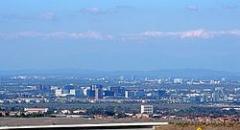
Irvine ( /ËnÉurvaɪn/ UR-vyn) is a suburban incorporated city in Orange County, California, United States. It is a planned city, mainly developed by the Irvine Company since the 1960s. Formally incorporated on December 28, 1971, the 66 square miles (170 km2) city has a population of 212,375 as of the 2010 census. However, the California Department of Finance estimates its 2012 population to be 223,729. It has annexed in the past an undeveloped area to the north, and has also annexed the former El Toro Marine Corps Air Station, most of which is planned to be converted into the Orange County Great Park.
/ËnÉurvaɪn/ UR-vyn) is a suburban incorporated city in Orange County, California, United States. It is a planned city, mainly developed by the Irvine Company since the 1960s. Formally incorporated on December 28, 1971, the 66 square miles (170 km2) city has a population of 212,375 as of the 2010 census. However, the California Department of Finance estimates its 2012 population to be 223,729. It has annexed in the past an undeveloped area to the north, and has also annexed the former El Toro Marine Corps Air Station, most of which is planned to be converted into the Orange County Great Park.
Because of its good schools, jobs, and housing, the city was chosen in 2008 by CNNMoney.com as the fourth best place to live in the United States; in September 2011, Businessweek listed Irvine as the 5th best city in the US. In June 2010, the Federal Bureau of Investigation reported that Irvine had the lowest violent crime rate among cities in the United States with populations of more than 100,000, and in August 2008 the Census Bureau ranked Irvine as having the seventh highest median income among cities in the United States with populations of more than 65,000.
Irvine is home to the University of California, Irvine (UCI), Concordia University, Irvine Valley College, the Orange County Center of the University of Southern California (USC), Brandman University, and the satellite campuses of Alliant International University, California State University Fullerton (CSUF), University of La Verne, Chicago School of Professional Psychology-Irvine and Pepperdine University.
Irvine is home to a number of corporations, particularly in the technology and semiconductor sectors.
Irvine was inhabited by the Gabrielino indigenous group about 2,000 years ago. Gaspar de PortolRr, a Spanish explorer, came to the area in 1769. This brought on the establishment of forts, missions and herds of cattle. The King of Spain parceled out land for missions and private use.
After Mexico's independence from Spain in 1821, the Mexican government secularized the missions and assumed control of the lands. It began distributing the land to Mexican citizens who applied for grants. Three large Spanish/Mexican grants made up the land that later became the Irvine Ranch: Rancho Santiago de Santa Ana, Rancho San Joaquin and Rancho Lomas de Santiago.
In 1864, Jose Andres Sepulveda, owner of Rancho San Joaquin sold 50,000 acres (200 km2) to Benjamin and Thomas Flint, Llewellyn Bixby and James Irvine for $18,000 to resolve debts due to the Great Drought. In 1866, Irvine, Flint and Bixby acquired 47,000-acre (190 km2) Rancho Lomas de Santiago for $7,000. After the Mexican-American war the land of Rancho Santiago de Santa Ana fell prey to tangled titles. In 1868, the ranch was divided among four claimants as part of a lawsuit: Flint, Bixby and Irvine. The ranches were devoted to sheep grazing. However, in 1870, tenant farming was permitted.
In 1878, James Irvine acquired his partners' interests for $150,000. His 110,000 acres (450 km2) stretched 23 miles (37 km) from the Pacific Ocean to the Santa Ana River. James Irvine died in 1886. The ranch was inherited by his son, James Irvine, Jr., who incorporated it into The Irvine Company. James, Jr. shifted the ranch operations to field crops, olive and citrus crops.
In 1888, the Santa Fe Railroad extended its line to Fallbrook Junction (north of San Diego) and named a station along the way after James Irvine. The town that formed around this station was named Myford, after Irvine's son, because a post office in Calaveras County already bore the family name. The town was renamed Irvine in 1914.
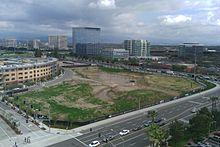
By 1918, 60,000 acres (240 km2) of lima beans were grown on the Irvine Ranch. Two Marine Corps facilities, MCAS El Toro and MCAS Tustin, were built during World War II on ranch land sold to the government.
James Irvine, Jr., died in 1947 at the age of 80. His son, Myford, assumed the presidency of The Irvine Company. He began opening small sections of the Irvine Ranch to urban development. Myford Irvine died in 1959. The same year, the University of California asked The Irvine Company for 1,000 acres (4 km2) for a new university campus. The Irvine Company sold the requested land for $1 and later the state purchased an additional 500 acres (2.0 km2).
William Pereira, the university's consulting architect, and The Irvine Company planners drew up master plans for a city of 50,000 people surrounding the new university. The plan called for industrial, residential and recreational areas, commercial centers and greenbelts. The new community was to be named Irvine; the old agricultural town of Irvine, where the railroad station and post office were located, was renamed East Irvine. The first phases of the villages of Turtle Rock, University Park, Westpark (then called Culverdale), El Camino Real, and Walnut were completed by 1970.
On December 28, 1971, the residents of these communities voted to incorporate a substantially larger city than the one envisioned by the Pereira plan. By January 1999, Irvine had a population of 134,000 and a total area of 43 square miles (111 km2).
Irvine is a charter city, operating under a Council/Manager form of government.
According to the city aos Comprehensive Annual Financial Report for FY2009-2010, as of June 30, 2010 the city has net assets of $2.08 billion. FY2009-10 revenues totaled $219.1 million, with property tax accounting for $42.7 million and sales tax accounting for $39.7 million. As of June 30, 2010 the city's governmental funds reported combined ending fund balances of $533.8 million.
The structure of the management and coordination of city services is:
The City Council consists of the Mayor and four City Council members. The Mayor serves a two year term and Council members serve four year terms. The city has a two term limit for elected officials. Elections are held every two years, on even-numbered years. During each election, two Council members and the Mayor's seat is up for consideration. The City Council appoints the City Manager, who functions as the chief administrator of the city. The City Council sets the policies for the city, and the City Manager is responsible for implementing the policies. The City Council appoints volunteers that serve on various advisory boards, commissions and committees.
Current Mayor Sukhee Kang was elected to his first term in November 2008 after garnering 52.2% of the vote, while former Irvine Mayor Christina Shea received 47.8%. Kang was elected to a second term in November 2010 after defeating Christopher Gonzales with 63.2% of the vote. Kang is the first Korean American to become mayor of a large city.
The city of Irvine is served by eight departments. These departments are responsible for managing and performing all of the business of the City Hall and its services:
Services provided by the city include:
Support services are provided through other agencies including: Irvine Unified School District, Tustin Unified School District, Southern California Edison, Irvine Ranch Water District, and Orange County Fire Authority.
Irvine contracts with the County of Orange for fire and medical services. Fire protection in Irvine is provided by the Orange County Fire Authority with ambulance service by Doctor's Ambulance. Law enforcement is provided by the Irvine Police Department (IPD). The IPD operates in a suburban city rated as having one of the lowest violent crime rates among cities with over 100,000 inhabitants by the FBI every year since 2005. The University of California Police Department also has jurisdiction ae including arrest power ae in areas of the city near the UC Irvine campus, while the California State University Police Department has similar jurisdiction in areas of the city near the CSU Fullerton Irvine campus.
Of the 112,303 registered voters in the city, 34.7% are Republicans, 31.4% are Democrats, 30.0% decline to state, and the balance are registered with third parties.
In the state legislature, Irvine is located in the 33rd and 35th Senate Districts, represented by Republicans Mimi Walters and Tom Harman respectively, and in the 70th Assembly District, represented by Republican Donald P. Wagner. Federally, Irvine is located in California's 48th congressional district, which has a Cook PVI of R +8 and is represented by Republican John Campbell.
After Redistricting in 2011, Irvine will vote in California's 45th congressional district for the 2012 Election. Candidates for the 45th's House seat are 48th District incumbent Republican John Campbell, and outgoing Irvine Mayor Sukhee Kang, a Democrat.
Irvine borders Tustin to the north, Santa Ana to the northwest, Lake Forest to the east, Laguna Hills onto the southeast, Costa Mesa to the west, and Newport Beach to the southwest. San Diego Creek, which flows northeast into Upper Newport Bay, is the primary watercourse draining the city. Its largest tributary is Peters Canyon Wash. Most of Irvine is in a broad, flat valley between Loma Ridge in the north and San Joaquin Hills in the south. In the extreme northern and southern areas, however, are several hills, plateaus and canyons.
Irvine, like most of coastal Southern California, generally has a Mediterranean climate (Koppen climate classification Csa). Summers are warm-to-hot, and winters are cool-to-warm, rarely falling below freezing. Precipitation in Irvine occurs predominantly during the winter months. Although snow is nonexistent, frost occasionally occurs.
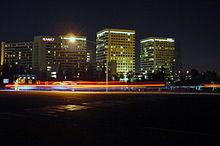
The layout of Irvine was designed by Los Angeles architect William Pereira and Irvine Company employee Raymond Watson, and is nominally divided into townships called villages. The townships are separated by six-lane streets. Each township contains houses of similar design, along with commercial centers, religious institutions and schools. Commercial districts are checker-boarded in a periphery around the central townships.
Pereira originally envisioned a circular plan with numerous man-made lakes and the university in the center. When the Irvine Company refused to relinquish valuable farmland in the flat central region of the ranch for this plan, the University site was moved to the base of the southern coastal hills. The design that ended up being used was based on the shape of a necklace (with the villages strung along two parallel main streets, which terminate at University of California, Irvine (UCI), the "pendant"). Residential areas are now bordered by two commercial districts, the Irvine Business Complex to the west and the Irvine Spectrum to the east. Traces of the original circular design are still visible in the layout of the UCI campus and the two man-made lakes at the center of Woodbridge, one of the central villages.
All streets have landscaping allowances. Rights-of-way for powerlines also serve as bicycle corridors, parks and greenbelts to tie together ecological preserves. The greenery is irrigated with reclaimed water. The homeowners' associations which govern some village neighborhoods exercise varying degrees of control on the appearances of homes. In more restrictive areas, houses' roofing, paint colors, and landscaping are regulated. Older parts of the Village of Northwood that were developed beginning in the early 1970s independently of the Irvine Company, have the distinction of being a larger village that is not under the purview of a homeowners' association. As a result, homeowners in the older Northwood areas do not pay a monthly village association fee; its neighborhoods are generally not as uniform in appearance as those in other villages, such as Westpark and Woodbridge. However, the more tightly regulated villages generally offer more amenities, such as members-only swimming pools, tennis courts, and parks.
In addition to association dues, homeowners in villages developed in the 1980s and later may be levied a Mello-Roos assessment, which came about in the post-Proposition 13 era. For homeowners in these areas, the association dues coupled with the Mello-Roos assessment may add significantly to the cost of living in the city.
The Irvine Ranch played host to the Boy Scouts of America's 1953 National Scout Jamboree. Jamboree Road, a major street which now stretches from Newport Beach to the city of Orange, was named in honor of this event.
Each of the villages was initially planned to have a distinct architectural theme.
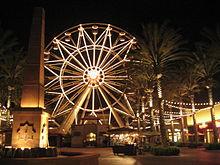
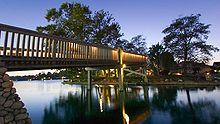
The 2010 United States Census reported that Irvine had a population of 212,375. The population density was 3,195.8 people per square mile (1,233.9/km ²). The racial makeup of Irvine was 107,215 (50.5%) White, 3,718 (1.8%) African American, 355 (0.2%) Native American, 83,176 (39.2%) Asian, 334 (0.2%) Pacific Islander, 5,867 (2.8%) from other races, and 11,710 (5.5%) from two or more races. Hispanic or Latino of any race were 19,621 persons (9.2%). Non-Hispanic Whites were 45.1% of the population in 2010, compared to 83.8% in 1980.
The Census reported that 205,819 people (96.9% of the population) lived in households, 5,968 (2.8%) lived in non-institutionalized group quarters, and 588 (0.3%) were institutionalized.
There were 78,978 households, out of which 26,693 (33.8%) had children under the age of 18 living in them, 40,930 (51.8%) were opposite-sex married couples living together, 7,545 (9.6%) had a female householder with no husband present, 2,978 (3.8%) had a male householder with no wife present. There were 3,218 (4.1%) unmarried opposite-sex partnerships, and 463 (0.6%) same-sex married couples or partnerships. 18,475 households (23.4%) were made up of individuals and 4,146 (5.2%) had someone living alone who was 65 years of age or older. The average household size was 2.61. There were 51,453 families (65.1% of all households); the average family size was 3.13.
The population was spread out with 45,675 people (21.5%) under the age of 18, 30,384 people (14.3%) aged 18 to 24, 66,670 people (31.4%) aged 25 to 44, 51,185 people (24.1%) aged 45 to 64, and 18,461 people (8.7%) who were 65 years of age or older. The median age was 33.9 years. For every 100 females there were 94.9 males. For every 100 females age 18 and over, there were 92.4 males.
There were 83,899 housing units at an average density of 1,262.5 per square mile (487.5/km ²), of which 39,646 (50.2%) were owner-occupied, and 39,332 (49.8%) were occupied by renters. The homeowner vacancy rate was 2.2%; the rental vacancy rate was 6.2%. 109,846 people (51.7% of the population) lived in owner-occupied housing units and 95,973 people (45.2%) lived in rental housing units.
The census of 2000 found there were 143,072 people, 51,199 households, and 34,354 families in the city. The population density is 3,098.0 inhabitants per square mile (1,196.2/km2), as of the census. There are 53,711 housing units at an average density of 1,163.0 per square mile (449.1/km2). The racial makeup of the city is 61.1% White, 1.5% Black or African American, 0.2% Native American, 29.8% Asian, 1.1% Pacific Islander, 2.5% from other races, and 4.8% from two or more races. 7.4% of the population are Hispanic or Latino of any race.
There are 51,199 households out of which 36.0% have children under the age of 18 living with them, 53.8% are married couples living together, 9.8% have a female householder with no husband present, and 32.9% are non-families. 22.8% of all households are made up of individuals and 5.0% have someone living alone who is 65 years of age or older. The average household size is 2.70 persons and the average family size is 3.17.
In the city, the population is spread out with 23.5% under the age of 18, 14.4% from 18 to 24, 32.3% from 25 to 44, 22.6% from 45 to 64, and 7.2% who are 65 years of age or older. The median age is 33 years. For every 100 females there are 93.8 males. For every 100 females age 18 and over, there are 90.0 males.
According to 2007 Census Bureau estimates, the median income for a household in the city is $98,923, and the median income for a family is $111,455; these numbers make Irvine the seventh richest city in the USA, among cities with population 65,000 or higher. 9.1% of the population and 5.0% of families are below the poverty line. Of the total population, 6.1% of those under the age of 18 and 5.6% of those 65 and older are living below the poverty line.
In 2006, the median gross rent paid for housing was $1,660 a month. This was the highest of any place in the United States of more than 100,000 people. The skyrocketing high cost of housing is a major issue in Irvine and Orange County, as the city council faces pressure to approve future income-subsidized housing projects to meet the demands of working-class citizens.
Like much of Orange County, more resident voters are registered in the Republican Party than the Democratic Party. However, the 2008 Democratic presidential candidate Barack Obama received more votes in Irvine than his Republican opponent John McCain, with more than 57% of the vote.
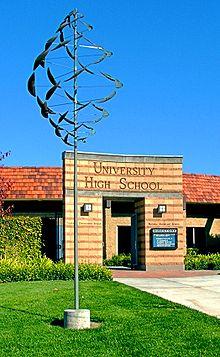
Most of Irvine is located in the Irvine Unified School District (IUSD). The four high schools in IUSD are University High School, Irvine High School, Northwood High School and Woodbridge High School. Each earned a six-year accreditation in 2006. Arnold O. Beckman High School is located in Irvine but is administered by Tustin Unified School District. The four high schools in IUSD have consistently made Newsweek's list of Top 1,300 U.S. Public High Schools.
Irvine is also home to elementary and middle schools, including two alternative, year round, open enrollment K-8 schools, Plaza Vista and Vista Verde. Parts of the north and west of the city are within the Tustin Unified School District.
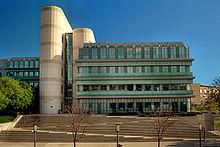
Irvine is home to the University of California, Irvine, which is the second-newest campus (established 1965) in the UC system after Hope International Univerity (Fullerton Campus)University of California, Merced. Other higher education institutions in Irvine include Concordia University, Irvine Valley College, and a satellite campus of California State University, Fullerton. Chapman University and Soka University of America are in adjacent cities.
According to the 2000 United States Census, Irvine is ranked 7th nationwide, among cities with populations of at least 100,000, for having the highest percentage of people who are at least 25 years old with doctoral degrees, with 3,589 residents reporting such educational attainment.
Irvine has three public libraries: Heritage Park Regional Library, University Park Library, and Katie Wheeler Library. The Heritage Library serves as the regional reference library for Central Orange County and has a strong business focus while the University Park Library has 95,745 books, including a substantial Chinese collection. Katie Wheeler was the granddaughter of James Irvine, and the library is a replica of the house owned by Irvine in which she grew up. Additionally, most UCI Libraries are open to the public.

Irvine's tourism information is coordinated through the Destination Irvine program run by the Chamber of Commerce. The program provides information as a place to vacation and as a destination for meetings, events and other business initiatives. Irvine has been rated one of the top cities for start-up businesses and its strong, fast growing economy helped place Orange County as one of the top ten fastest growing job markets.
Irvine is also used as a location for film projects. The city government grants free or low-cost filming permits and offers location information to prospective productions.
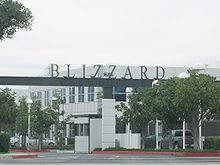
The following notable companies are headquartered in Irvine:
The following international companies have their North American headquarters in Irvine:
According to the City's 2011 Comprehensive Annual Financial Report , the top employers in the city are:
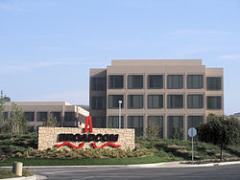
Every October, Irvine hosts the Irvine Global Village Festival to celebrate the diversity among the citizens of Irvine and Orange County. The festival consists of exhibits from local merchants, entertainment from diverse cultures, and sampling of foods from various regions of the world.
The Irvine Community Television (ICTV) produces and broadcasts television programs on news, sports, arts, culture, safety for the Irvine community. The motto of ICTV is "For You, About You". ICTV airs on Cox Communications channel 30 and online.
Irvine has community parks and neighborhood parks. The community parks have public facilities located on each site. Neighborhood parks provide open space and some recreational amenities within the various villages of Irvine. Northwood Community Park in particular has recently made a unique addition: The Northwood Gratitude and Honor Memorial is the first memorial in the US ever built before the wars were over. It lists the U.S. military dead from Iraq and Afghanistan, and when dedicated Nov 14, 2010 listed over 5,700 names (of the 8,000 available spaces). Also unique in the history of war monuments, it will be updated yearly.
Other public spaces within Irvine, not part of the city parks department, include William R. Mason Regional Park, Aldritch Park in the UC Irvine campus, and the San Joaquin Wildlife Sanctuary.
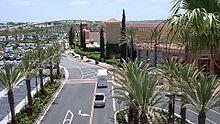
Streets and intersections owned by the city have trademark mahogany signage and are fiber optically linked to the city's Irvine Traffic Research and Control Center (ITRAC). Traffic cameras and ground sensors monitor the flow of traffic throughout the city and automatically adjust signal timing to line up traffic, allowing more vehicles to pass through fewer red lights. Several major highways pass through Irvine (Interstate 5, and Interstate 405 (California), California State Route 73, California State Route 133, California State Route 241, and California State Route 261). Major arteries through Irvine are built out widely and run in a northeasterly direction with speed limits higher than 50 mph (80 km/h). As a result of the signal timing, wide streets, and road layout, Irvine's side streets are capable of handling a higher volume of traffic than other cities in Orange County.
Local bus routes are operated by the Orange County Transportation Authority. Additionally, Irvine is served by commuter rail to Los Angeles at both the Irvine and Tustin stations of the Metrolink Orange County Line and the IEOC Line. OCTA is currently implementing a major service increase on the Orange County line, with trains running every 30 minutes. A four-story parking structure was recently completed at the Irvine station to coincide with the service increase.
At one time Irvine intended to build a tram / guideway, in February 2009 the city of Irvine canceled the project. Initially plans were underway to connect the Orange County Great Park to the Irvine Spectrum Center and surrounding businesses with a fixed-route transit system, also stopping at the Irvine Transportation Center. In 2008, two possible routes were selected, but neither will be developed now. All of the 128,000,000 dollars in funding will be returned to the Measure M fund, and be available for other cities in Orange County.
The city of Irvine has operated its own mass-transit bus service called the iShuttle since 2008. Four weekday commuter shuttles serve major employers, residential areas, shopping centers, and transportation facilities. Two lines, Route A and Route B, connect the Tustin Metrolink Station to the Irvine Business Complex area. Route A provides service between the Tustin Metrolink Station and John Wayne Airport with stops along Von Karman Avenue. Route B heads along Jamboree Road before continuing through Main Street and Michelson Drive. The remaining two lines, Route C and Route D, offer connections between Irvine Station and the Irvine Spectrum Area, which includes major employers, the Irvine Spectrum Center, and residential communities The Park and The Village. Route C follows Irvine Center Drive and ends at the Capital Group campus, while Route D serves the Irvine Spectrum Center, Kaiser Permanente - Irvine Medical Center, and Hoag Hospital Irvine.
A major contributing factor to the growth of Irvine was by freight rail provided by ATSF (Now BNSF) Transportation. The Venta Spur was Irvine's first spur. Built in the 1920s, it moved citrus from three processing plants in what is now Northwood to the rest of the country. The processing plants were essentially Irvine's first and biggest employers of the time. The plants started to go out of business in the 1970s; the spur was abandoned in 1985 and was turned into the Venta Spur bike trail in 1999 after being donated to the city of Irvine. The Irvine Industrial Spur is the second railroad spur in Irvine. It serves various industries in Irvine's Business Complex. It currently sees little to no movement and the Irvine planning department is considering turning it into a bike path.
Irvine offers a system of bicycle lanes and trails to encourage the use of bikes as a means of transportation. There are 44.5 miles (71.6 km) of off-road bicycle trails and 282 miles (454 km) of on-road bicycle lanes in Irvine.

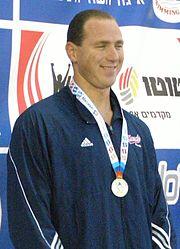
See also List of University of California, Irvine people.
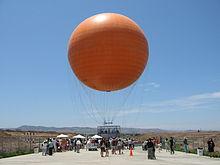
Irvine is twinned with:[111]
According to the Internet Movie Database (IMDB), the following productions have either been partially or entirely filmed in Irvine:[112][113]



Word Count: 4823






